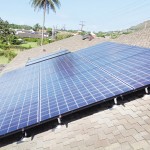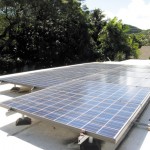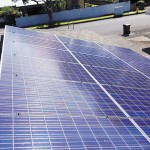Welcome to the new world for solar energy in Hawaii and the need for battery storage systems. An additional layer of equipment is now required that encompasses batteries, software, control system and a different inverter. The need to be more informed when determining the best solution for your needs becomes a priority. Not being informed can be a very painful experience, as the choices can become very expensive lessons.
How do you choose the right photovoltaic system now that the new net metering program eliminates full credit for energy exported to the grid? What are the differences between the battery storage systems to store the excess power my system produces to use later at night? How do I choose the best system design for my needs and my budget? What do the warranties for battery life expectancy really mean and how can I avoid making a poor purchase decision?
Getting the complete picture and providing you with the knowledge base so you can make an informed decision are the objectives of Pacific Islands Solar. As a division of Pacific Islands Construction, the company always has provided the best-made solar modules, racking system components, roof flashings and inverters.
Residential solar has not been the major benefactor of battery system manufacturer attention. The fact is not many solar systems for residential applications have been installed. Mixed results from these installations have shown poor battery life and promises unfulfilled. The resulting poor investment has cost many as they replace the batteries in a shorter period of time than what was promised. Just think of how long your cell phone battery has lasted and understand the similarity in how the battery gets weaker over time as it needs to be recharged more often. The same thing happens to solar energy batteries.
Leading battery manufacturers like Panasonic, the battery used by Tesla, promise to provide a 10-year life cycle. Batteries have what is called a depth of discharge, which allows the battery to be discharged down to a certain percentage of stored energy. The lithium ion battery that Panasonic produces can be discharged down to 10 percent without ruining the battery if done repetitively. Doing so also shortens the life so generally these batteries are discharged down to about 20 percent to give the life cycle one is looking for. Different battery technologies have a depth of discharge rate that recommends even less discharge to extend the life of the battery. Manufacturers are investing into new materials, seeking ways to get more out of batteries hoping to get longer expected life span and be able to discharge to zero percent of the storage capacity. For commercial applications, fl ow batteries have already done this as they can completely be discharged again and again with no effect on the batteries storage capacity. Flow batteries also have a 20-year life cycle and are the benefactor of the U.S. Department of Energy efforts to create long life viable battery technology.
Companies such as US JLM Energy and Japans’ Tabuchi have systems already in place in Hawaii. Having experience in the actual deployment of a technology is important so that you are not the test trial. There will be many systems that will come into the market place but it is best to not base your decision on the lowest initial cost solution as this may be more costly in the end. Do not rely on the warranties to save you as they are written by the manufacturer to protect themselves not you.
Pacific Islands Solar believes it has an obligation to provide its customers with only the highest rated and tested products to ensure that its customer comes first. If you would like to find out more about residential solutions or are a commercial application interested in flow batteries please give the company a call. It tries to protect customers from the issues faced by using only the best equipment and installation practices. It offers many services inclusive of system inspections, module cleaning and helping with warranty issues.
PACIFIC ISLANDS CONSTRUCTION LLC
contact // 841-7756 • 372-3255
web // pacificislandsconstruction.net
See more articles from: Pacific Islands Construction


